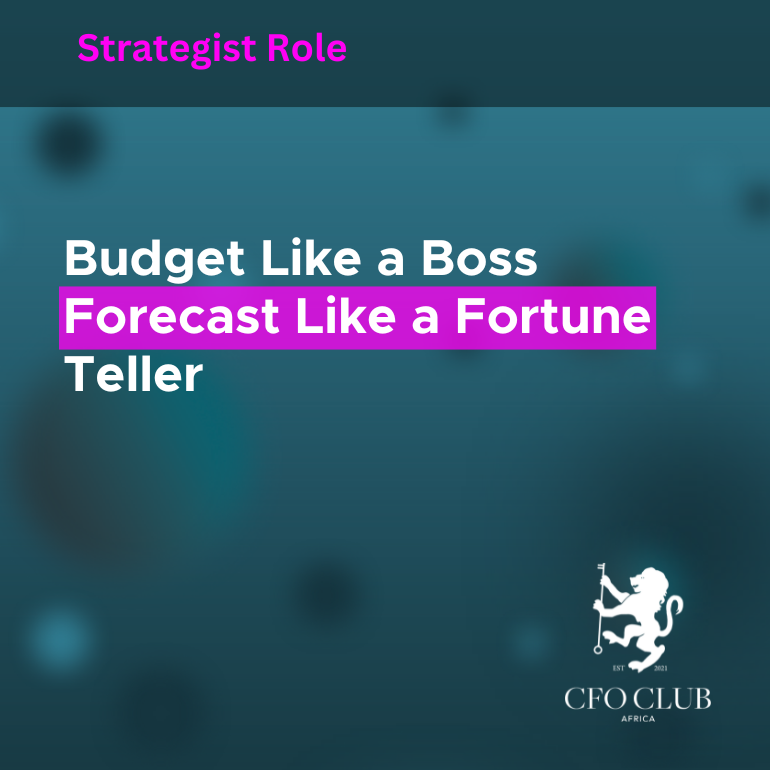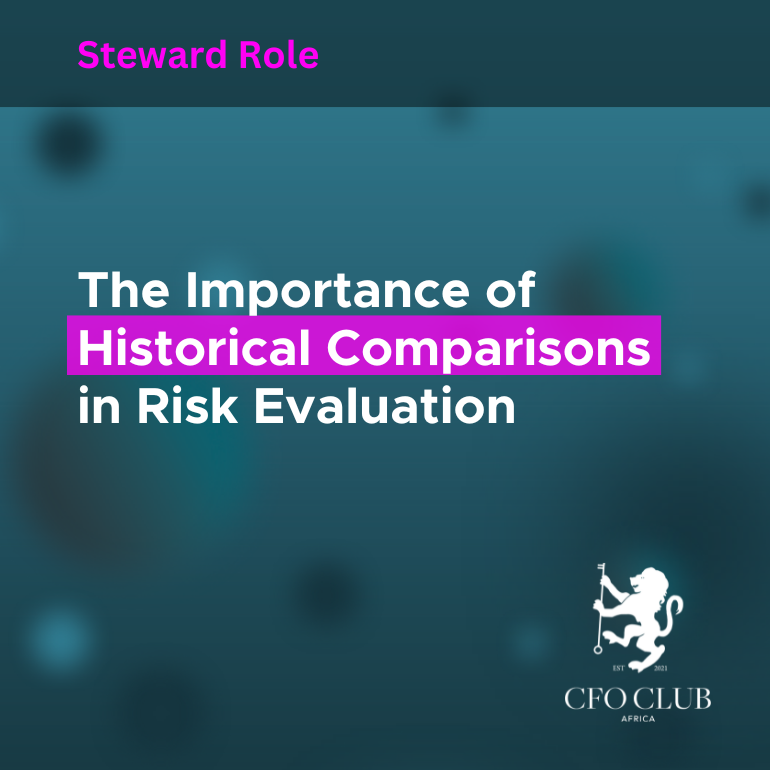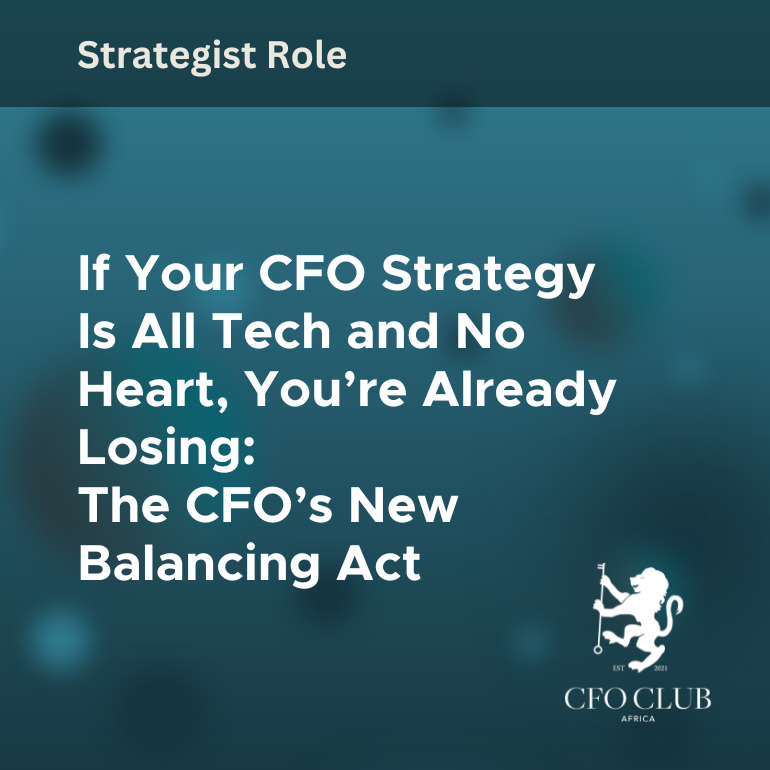Budget Like a Boss Forecast Like a Fortune Teller
Let’s be honest—most budgets are born in spreadsheets, tweaked to death in boardrooms, then promptly forgotten until Q2 panic sets in. But for a CFO worth their salt, budgeting and forecasting aren’t just admin—they’re power tools. The difference between riding the wave and being swallowed by it.
Here’s how you turn those numbers into weapons of strategy, influence, and control—and how to do it in your business.
Budgeting Is Not Just “Planning” – It’s Storytelling with Muscle
A solid budget doesn’t just say “we’ll spend less on stationery.” It tells your business: Here’s what matters this year. Here’s what we’re willing to invest in. Here’s where we’re not compromising.
But to do that, your budget needs to cover:
- Ops budgets that tie into real deliverables
- CapEx plans that are justified, not just optimistic
- Cashflow that matches the rhythm of your receivables
- Risk buffers—because no one likes surprise fires with no extinguisher
How to implement it:
1. Start with strategy, not last year’s spreadsheet. Facilitate strategic planning sessions with execs and department heads. What are the top 3 priorities this year? What must we stop doing?
2. Create budget templates for each business unit that clearly separate fixed, variable, and discretionary expenses.
3. Layer in scenario modelling for best, likely, and worst cases.
4. Include a budget assumptions register—every key input (sales growth %, inflation, exchange rates) must be documented and justified.
Forecasting Isn’t Guesswork—It’s Your Built-In Early Warning System
If your forecast is just a slightly revised version of your budget, you’re doing it wrong. Forecasting should be:
- Live
- Iterative
- Scenario-based
- Brutally honest
Rolling forecasts (think: 12- to 18-month forward glides) give you a sharper edge. You can smell trouble sooner, adjust your runway, and keep the board informed without the usual “we didn’t see this coming” excuse.
How to implement it:
1. Move from static to rolling forecasts. Update your forecast monthly or quarterly, always looking 12–18 months ahead.
2. Automate data pulls from sales systems, payroll, and ERP software to minimise delays and manual errors.
3. Hold monthly forecast meetings with cross-functional leads to validate inputs and flag anomalies.
4. Overlay external data, like inflation trends or commodity prices, to keep forecasts grounded in reality.
Budgeting Without Tech Is Like Driving Blindfolded
Still stuck in Excel hell? No judgment—but there’s a better way.
Smart CFOs are harnessing platforms like Adaptive Insights, Anaplan, or Power BI to automate, visualise, and collaborate. Whether it’s building scenario models or integrating your forecasts with operational data, tech gives you speed, clarity, and the ability to pivot mid-year.
How to implement it:
1. Start with the tools you have—use Power BI or Excel with Power Query to automate reports if bigger platforms aren’t feasible.
2. Create driver-based models—define the inputs (like sales volume) that drive your outputs (like revenue).
3. Build dashboards that track actuals vs forecast across key areas like sales, cash, and headcount.
4. Phase in improvements—you don’t need to roll out enterprise planning software in one go. Start with one department or business unit.
If You’re Budgeting Alone, You’re Doing It Wrong
Old-school budgeting was finance telling the business what it could or couldn’t have. That’s dead.
Today, your job is to bring business units into the process. Let them build, let them own—but you drive accountability.
Your job is to:
- Coach budget owners to think like investors
- Translate strategy into spend (and explain the trade-offs)
- Build financial literacy across the organisation
How to implement it:
1. Run budget owner training sessions to teach managers how to build a realistic, defensible budget.
2. Use simple tools like a “request justification template” to link budget items to strategic objectives.
3. Facilitate quarterly budget reviews where units explain variances and re-prioritise.
4. Make dashboards visible—show department heads how they’re tracking against budget to create ownership.
Plan for the Unplannable – That’s Your Job Now
Markets shift. Suppliers fold. Interest rates bite.
A comprehensive forecasting process doesn’t just hope things stay stable. It anticipates turbulence. That’s why every CFO needs:
- Scenario planning (best, worst, base)
- Sensitivity analysis (what happens if the rand tanks?)
- Stress testing (can we still make payroll if we lose a top client?)
Forecasts don’t predict the future. They prepare you for it. And that’s what separates resilient businesses from reactive ones.
How to implement it:
1. Build a scenario matrix with 3–5 plausible business conditions (e.g. drop in sales, spike in fuel costs).
2. Model the impact on cashflow, EBITDA, and runway.
3. Pre-define decision points—e.g. if revenue drops 20%, we pause non-essential CapEx.
4. Get buy-in from execs—they must know what actions will be triggered and when.
Tie Budgets to Actual Performance – or Don’t Bother
This part is not optional. If your exec team isn’t seeing monthly actuals vs. budget vs. forecast, what’s the point?
Give them:
- Variance analysis with context (not just numbers—narratives)
- Dashboards that show trends, not just totals
- Conversations that connect money to outcomes
How to implement it:
1. Design monthly variance reports with traffic light indicators, commentary, and drill-down capability.
2. Focus on trends, not just deviations. 2 months in a row of rising marketing spend matters more than a one-time overage.
3. Host monthly flash reporting meetings—short, sharp reviews with key stakeholders to keep performance tracking alive.
4. Link results to incentives. If you want ownership, tie performance to bonus outcomes.
Don’t Forget ESG – It’s Not Just for Marketing Decks
Budgets that ignore ESG priorities are budgets that will need redoing when regulations (or investors) catch up.
Start budgeting for:
- Carbon reduction projects
- Sustainable sourcing
- Social impact initiatives
- Compliance costs around reporting and disclosures
How to implement it:
1. Identify ESG priorities relevant to your industry and jurisdiction.
2. Create ESG cost centres and allocate spend—don’t hide it in general overheads.
4. Involve sustainability leads in the budget process.
4. Report ESG performance quarterly to the board and use it as a competitive advantage when engaging clients or lenders.
Own It
CFOs today aren’t back-office number wranglers. You’re the chief strategist with a calculator. Budgeting and forecasting are how you prove your value—every quarter, every board pack, every pivot. So don’t just report the numbers. Use them to drive the business, lead the conversation, and steer the ship. Because if you’re not doing it, someone else will—and they might not know what they’re doing.





